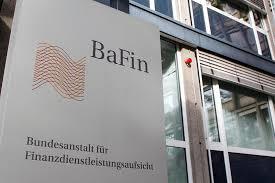Alternative investments, principally private equity, resource-based investments and hedge fund products, are a small but growing segment of the European investment landscape. An alternative investment position is a potentially attractive substitute for some portion of the strategic equity allocation in a diversified investment programme.
Investors should not consider establishing an alternative investment exposure unless they are comfortable accepting sparse pricing information, relatively high fees, and the lack of a specific benchmark. For many alternative investments, there are also issues of illiquidity. For example private equity investment generally requires money to be tied up for seven to 12 years.
Do not attempt to determine the allocation to alternatives using mathematical optimisation techniques - return distribution data is simply too sparse to produce robust results. Instead, a more qualitative assessment is needed; the allocation to any alternative investment is best determined by informed judgement. Thus, taking private equity as our example again, you should consider this to be part of the overall equity allocation - the valuations and long-term results of alternative investments will be related to activities within the equity markets. A part of this asset class can then be set aside for less liquid investments. To have a meaningful impact on investment programme performance, a private equity programme will usually be larger than its market weight, and will thus constitute a (very long-term) active bet.
The benchmark for performance then needs to be considered. For all alternative investments, a lack of meaningful index data means benchmarks should focus on the opportunity cost. For most (and certainly for private equity), this will be a foregone exposure to liquid equities. A successfully managed private equity programme should provide a return premium over public market securities given the attributes of the marketplace, such as liquidity premium for taking private companies public, leverage present in many of the investment vehicles and management efficiencies created by owners/managers. A reasonable performance benchmark would thus be a liquid equity index return, plus a minimum return premium that justifies the additional risk and illiquidity of the investment – perhaps 3–5%. However, any selected basis for performance monitoring will provide only a very imprecise match to the assets being measured.
Turning to implementation, successful investment in alternatives depends completely on active management. The absence of a suitable benchmark precludes passive investment strategies. Investors should hire an external manager with expertise to run the portfolio – professional management will provide an increased opportunity set, access to top funds, and skills that can’t be hired as internal staff. The difference between first quartile and third quartile performance among active private equity managers in the US has exceeded 2000bps over 10-year spans, contrasted to 300bps in US public equity. While successful PE partnerships can post long-term performance numbers not attainable by liquid equity managers, the majority of PE managers fail to beat the results of public market indexes.
With some types of alternative investment transparency can be an issue. Here, the obvious example would be many hedge fund offerings, which do not provide investors with details of underlying holdings and hence are difficult to monitor or to fit into the investor’s wider investment strategy. Indeed, the greatest challenge in finding a role for hedge funds for an institutional investor in practice is often that they can so easily undermine the chosen strategy.
Costs can be high. Fee structures vary by the type of alternative investment but both private equity and hedge funds typically see fees more than double those charged by the typical liquid equity manager. Indeed, some top venture capital firms can now charge as much as 3% to their limited partners. In addition to high fees is the share of profit or ‘carried interest’. This has historically been a 20% share for general partners, but top firms have increased this to 30%. Most hedge funds also charge a performance related fee on top of the basic management charge.
Bob Cullie is director of consulting with Frank Russell in London and Mike Smith is a senior consultant in Tacoma, Washington




























No comments yet